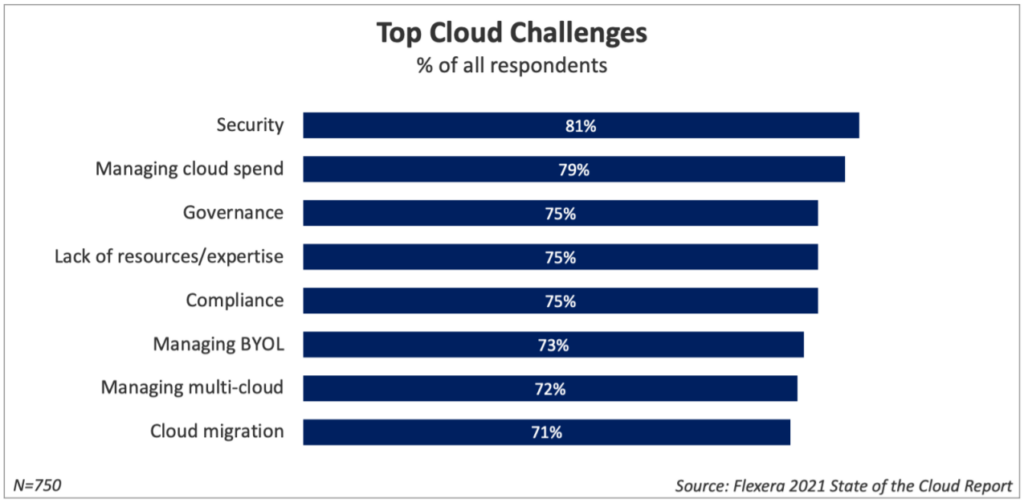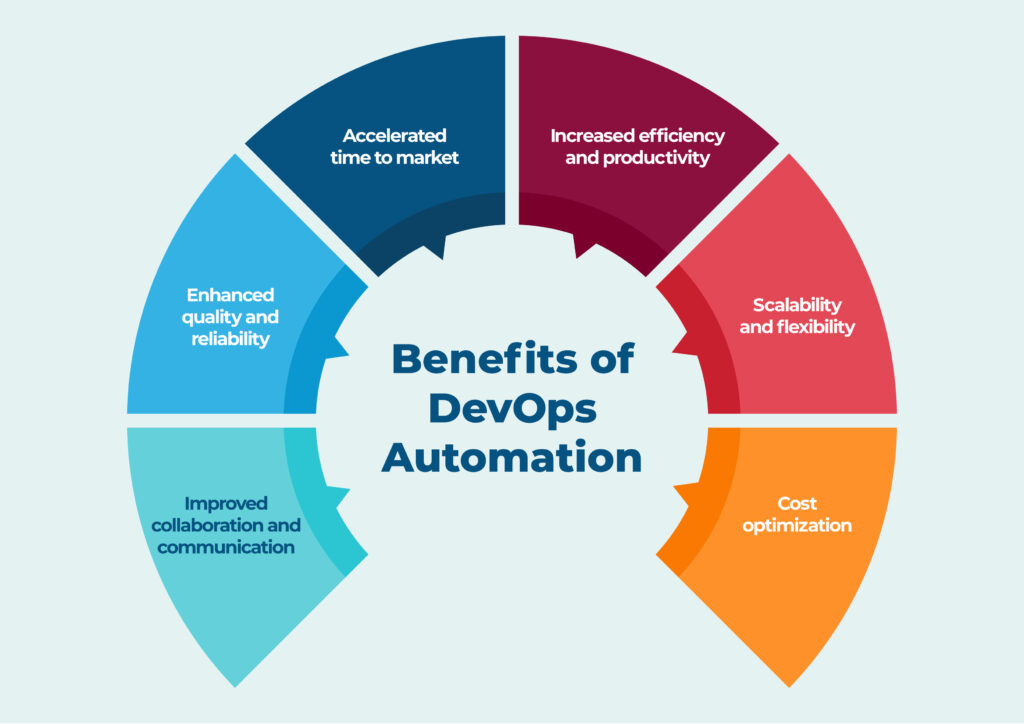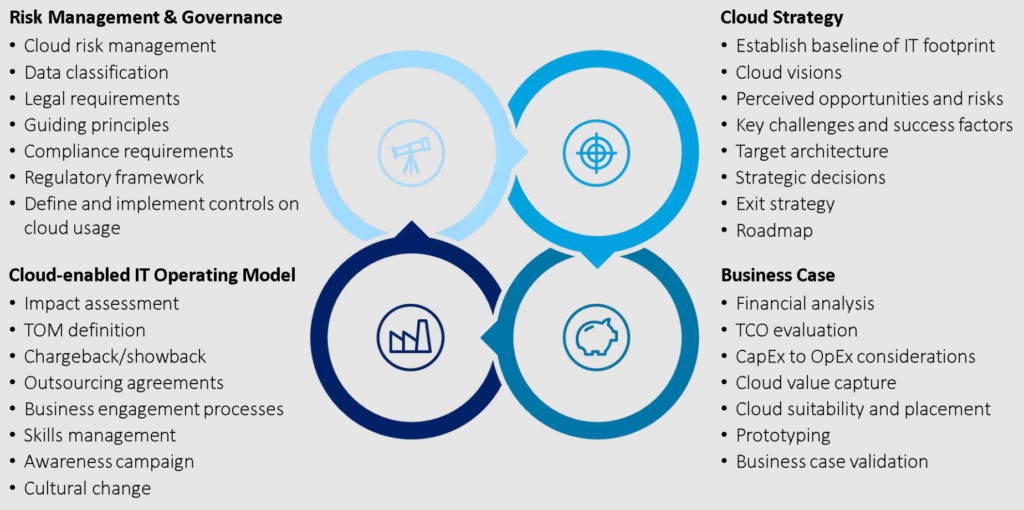Top 12 Open Source Code Security Tools
Open source software is everywhere. From your server to your fitness band. And it’s only becoming more common as over 90% of developers acknowledge using open
For DevOps software developers, navigating the cloud landscape without a clear understanding of risks is equivalent to walking into a minefield blindfolded. Cloud risk management, therefore, becomes an indispensable tool for DevOps – enabling us with the ability to identify, assess, and mitigate potential threats that could jeopardize their applications, their data, and their organization’s reputation.
This practical guide delves into the intricacies of cloud risk management, providing DevOps with a comprehensive framework for understanding and effectively managing cloud-related risks.
The aim of DevOps is to deliver high-quality software at a faster pace by automating the software delivery process. However, this approach also increases the risk of security breaches and other cloud-related risks.
DevOps, with its emphasis on rapid deployment, often relies on cloud resources, intensifying complexities and vulnerabilities that necessitate careful risk management. DevOps increases organizations’ exposure to a range of technology risks, including cyber risks.
Hosting sensitive data in the cloud requires robust security measures and compliance with industry standards. A report by ISACA recommends performing vendor risk assessments for contractual clarity, ethics, legal liability, viability, security, compliance, availability, and business resiliency.
Effective Cloud Risk Management optimizes resource usage, preventing overspending and ensuring cost-effectiveness—a critical factor for efficient DevOps operations.
A thorough risk assessment involves identifying threats, evaluating vulnerabilities, and understanding their impact on the DevOps workflow. DevOps teams need to ensure there is a robust risk-based framework in place to ensure risk optimization, IT, and system resilience.
Once risks are identified, proactive measures like robust security protocols, encryption methods, and backup mechanisms must be employed.
But what exactly are the risks?

Here are the top 3 cloud-related risks that you might encounter:
Security vulnerabilities are one of the most significant risks associated with cloud computing. They can arise due to a lack of proper security measures, such as weak passwords, unpatched software, or misconfigured servers. Such vulnerabilities can be exploited by attackers to gain unauthorized access to your data, steal sensitive information, or launch a cyberattack. In 2021, a misconfigured AWS S3 bucket exposed the personal data of over 100 million Capital One customers.
Cloud services can be expensive, and organizations need to manage their costs effectively to avoid overspending. This can be challenging, as cloud services are often billed based on usage, and it can be difficult to predict how much you will need to spend. In 2021, a company called Codecov suffered a supply chain attack that resulted in a breach of its Bash Uploader script. The attackers used this breach to steal the company’s credentials and access its cloud infrastructure, resulting in a $5 million bill for the company.
Compliance challenges are another significant risk associated with cloud computing. Organizations need to comply with various regulations and standards, such as HIPAA, PCI DSS, and GDPR, to ensure the security and privacy of their data. However, cloud service providers may not always meet these requirements, leading to compliance issues. In 2020, Zoom faced criticism for its lack of end-to-end encryption, which violated GDPR.
DevOps practices can help software developers mitigate cloud risks effectively by providing a culture of collaboration, automation, and continuous monitoring. By integrating development and operations teams, DevOps enables developers to identify and address cloud risks early in the software development lifecycle, reduce the time-to-market, and improve the quality and security of software solutions.
Here are the top 3 strategies.
Automation is a key component of DevOps practices that can help software developers manage cloud risks efficiently and consistently. By automating the deployment, testing, and monitoring of cloud applications, developers can reduce the risk of human errors, increase the speed and frequency of software releases, and ensure the compliance and security of cloud environments. Automation tools such as Ansible, Puppet, Chef, and Terraform can help developers manage cloud infrastructure as code, enforce security policies, and monitor cloud resources in real-time.

Continuous monitoring is another critical component of DevOps practices that can help software developers detect and respond to cloud risks proactively. By monitoring the performance, availability, and security of cloud applications, developers can identify anomalies, vulnerabilities, and threats in real-time, and take corrective actions before they cause any damage or disruption.
Continuous monitoring tools such as Nagios, Zabbix, Prometheus, and Grafana can help developers monitor cloud resources, set alerts, and generate reports on cloud performance and security.
Collaborative approaches are also essential for effective cloud risk management in DevOps. By fostering a culture of collaboration, communication, and feedback, DevOps enables developers to share knowledge, skills, and best practices, and align their goals and objectives with those of other stakeholders.
Collaborative tools such as Slack, Microsoft Teams, Jira, and Confluence can help developers communicate and collaborate effectively, track issues and tasks, and share documentation and knowledge.
Here are some actionable tips and best practices for software developers to proactively manage cloud-related risks:
Access control is a critical component of cloud risk management. You need to ensure that only authorized personnel have access to your cloud infrastructure and data. Here are some best practices for access control:
Data encryption is another essential component of cloud risk management. You need to ensure that your data is encrypted both in transit and at rest. Here are some best practices for data encryption:
Compliance monitoring is critical to cloud risk management. You need to ensure that your cloud infrastructure and data comply with various regulations and standards. Here are some best practices for compliance monitoring:
Cost optimization is another critical component of cloud risk management. You need to ensure that you are not overspending on cloud services. Here are some best practices for cost optimization:

Performance tuning is also an essential component of cloud risk management. You need to ensure that your cloud infrastructure is performing optimally. Here are some best practices for performance tuning:
DevOps, as a catalyst for rapid software deployment, necessitates a nuanced understanding of cloud complexities. Navigating Cloud Risk Management in DevOps requires a holistic grasp of cloud service models, security nuances, compliance obligations, and best practices to mitigate risks effectively.
Navigating Cloud Risk Management within DevOps warrants a holistic approach. It involves not only recognizing the risks but also adeptly maneuvering through them. Understanding cloud service models, security intricacies, compliance obligations, and best practices constitutes the bedrock of effective risk mitigation.
SpectralOps is a developer-first security solution that helps organizations find and fix security vulnerabilities in their code, configurations, and other artifacts in real-time.
To learn more about how SpectralOps can help you keep your DevOps practices secure, create your free account today.

Open source software is everywhere. From your server to your fitness band. And it’s only becoming more common as over 90% of developers acknowledge using open

It’s easy to think that our code is secure. Vulnerabilities or potential exploits are often the things we think about last. Most of the time, our

Experiencing a data breach is never pleasant. Just ask any of the hundreds of businesses that suffered a data breach in the past year, exposing billions